

You’d be hard pressed to find someone who doesn’t like to travel. Similarly, you’d be hard pressed to find someone who actually enjoys flying. From the TSA, to overpriced airport food, to being bumped from your flight when it’s overbooked; you could be forgiven for thinking that modern air travel is designed to be a frustrating — and at times Kafkaesque – experience.
I, on the other hand, don’t mind flying. Over the past two years, I’ve taken over 50 individual flights, much of it within Europe and on transatlantic routes. I’ve learned to cope with the arcane and unyielding rules of airports, and the general misery of flying economy.
This is partly because I’ve learned how to plan my trips with the aim of maximizing my overall comfort, and using technology to make my trip that bit more bearable.
Here are some of the “secret flying tips” you need to know.
Before you even set foot in the airport, there’s a lot you can do to improve your flying experience. This will require a bit of research, as you’ll soon find out.
Some people are quite happy to sit on an airplane and bide their time with a good book while they wait for the plane to touch down. They’re not concerned with in-flight amenities like a free drinks service, or an In-Flight Entertainment (IFE) screen. Others are a bit more demanding.
With that in mind, it’s always helpful to do a bit of research into the airline you’ll be flying with. This is especially true when you travel within Europe, as some of the airlines you often associate with premium service (like Aer Lingus and Brussels Airways – both “flag carrier” airlines) are indistinguishable from traditional “no frills” airlines, like Spirit, Ryanair, and EasyJet, and do not offer complimentary meals or drink service.
Before booking a flight with an unfamiliar airline, I first search for them on SkyTrax. Not only does this give me a real-world overview of what their customers think, but I also get an understanding of what to expect in terms of seats and service.

Another great tool is Wanderbat, which allows you to directly compare multiple airlines based purely on the fees they charge, the service they offer, and what their customers think.
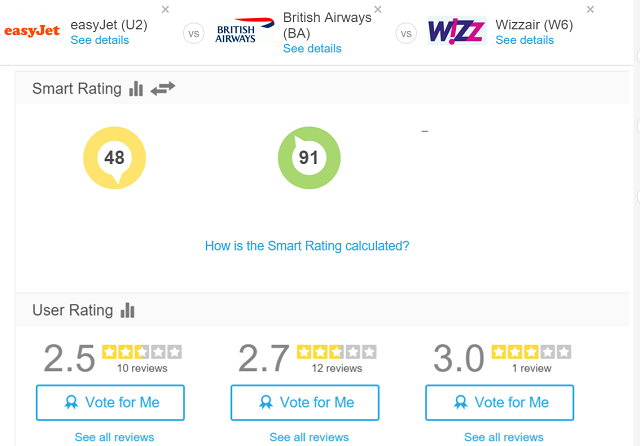
Confession: I’m a hardcore airplane nerd.
Seriously, drive me to any airport, and I’ll be able to point out each of the different jets sitting on the tarmac. “There’s a 747. There’s an A330. There’s an Embraer ERJ-175″.
So, why do I get so excited about aircraft?
Because I know that the aircraft I fly on directly impacts how comfortable I will be on my journey. I know that if I’ve got a choice between a cramped Embraer regional jet and a Boeing 737, the 737 will be slightly roomier. Likewise, if I’m doing a transatlantic jaunt and I’ve got a choice between a Boeing 787 Dreamliner and any of the competing Airbus planes, I’ll pick the Dreamliner because it has bigger storage bins, adjustable LED lighting that’s easy on the eyes, and large windows that flood the cabin with natural light.
Moreover, I know that planes can differ from airline to airline. Some airlines, for example, fly 757s on transatlantic routes that are equipped with personal entertainment screens, where you can choose the films and TV shows you want to watch. Others use the older-style drop-down screens, where you have to squint to watch the same awful Harrison Ford film as everyone else.
I know what planes to avoid and what planes to aim for. This information directly influences how I plan my travel.
Before I pay for a trip, I look at FlightAware, and search for the route I’m interested in taking. Below I’m looking at London Heathrow (LHR) to Newark (EWR).
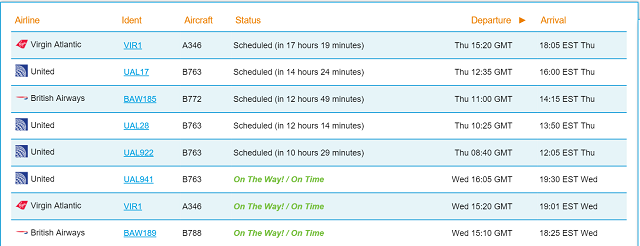
As you can see, a number of airlines fly this route, each using different equipment. Since I prefer to fly long-haul flights on Boeing 787 Dreamliners, I’ll choose to fly British Airways.
It’s worth noting that you can usually find out what aircraft will be operated before you book a flight straight from the airline.
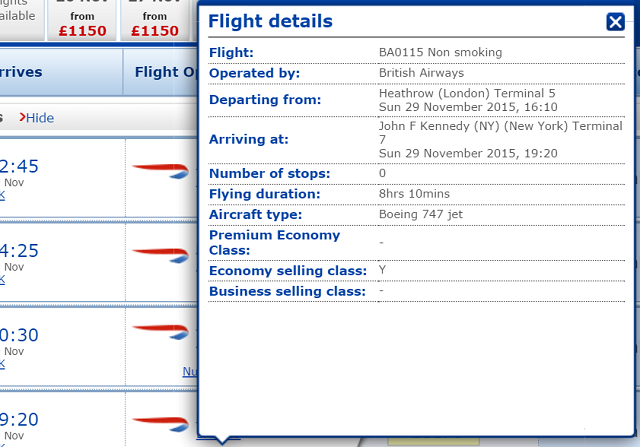
Once I know the airline and the plane, I plug that information into SeatGuru. This tells me what amenities are offered; from personal entertainment screens, to in-flight WiFi.
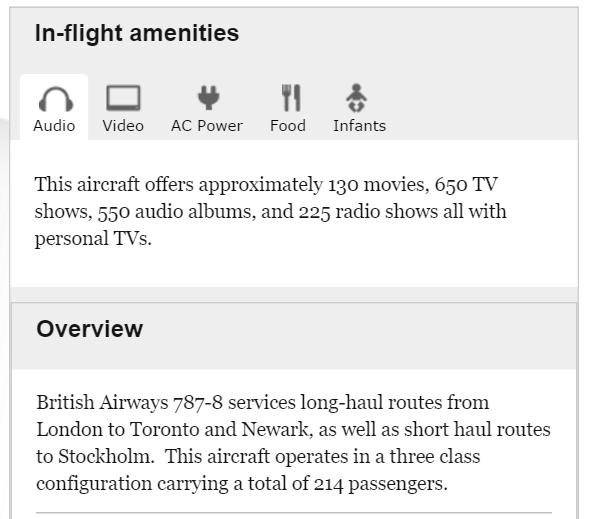
Not all airline seats are created equally. if you let your airline choose your seat for you, you’re taking a huge gamble on your overall comfort.
If you end up at the back of the plane, you’re going to end up with a rigid bulkhead seat which you won’t be able to recline. You’ll probably be the last to be served when the meal service comes round, which also means you might not get your first choice of food. Triple whammy – you’re miserable, uncomfortable, and you get the vegetarian option for dinner.
Sitting near the toilet is equally bad. Generally, things are a bit more pungent here, and if you want to catch a bit of shuteye, the constant movement of people rushing to use the toilet will keep you awake.
Moreover, some seats have IFE boxes underneath them, which are responsible for powering that row’s in-flight entertainment systems. These are bulky, and can really limit the amount of legroom you have.
As you can see, there are a lot of variables that can affect your overall comfort level when flying. Personally speaking, I like to sit at the very front row of economy. These seats generally have more legroom, and you’re amongst the first to get served lunch, and the first to leave the plane. But if that’s not available, it’s always good to identify the second (and often third) best seats available.
Again, I do that with Seat Guru. Plug in the airline and the aircraft, and it’ll point out the seats to snap up, and the seats to avoid. For example, check out economy on the British Airways Boeing 747-400. I’m looking at my preferred seat:
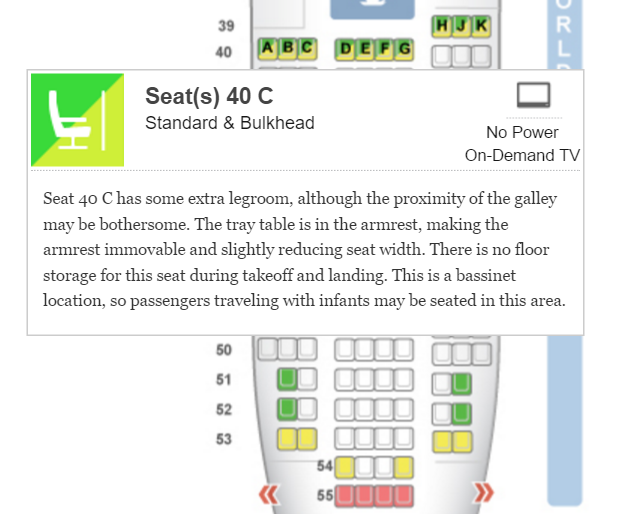
Here, it thoroughly discusses the advantages and disadvantages of this particular row. Namely, although it comes with miles more legroom, it lacks floor storage and movable armrests. You might be disturbed by screaming infants too, because this row is often used by parents, because they can seat a bassinet on the floor.
SeatGuru even identifies the bad seats, and explains why they should be avoided. Check out this utterly crummy seat, also on a Boeing 747.
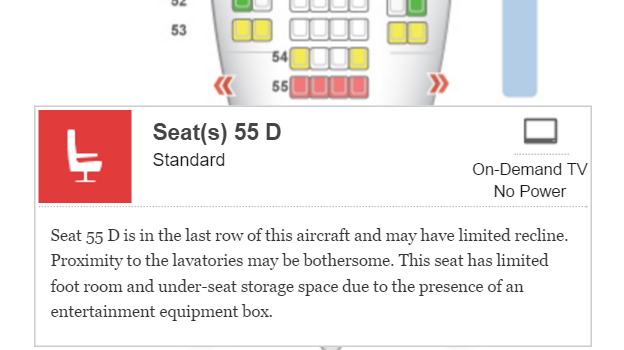
Airports are never fun. Doubly-so when you’ve got an excruciating long layover. Thankfully, if you’ve got a smartphone, you can make them a bit more tolerable. Here’s how.
Whenever I have a layover that’s longer than six hours, I leave the terminal and head into the city. It’s a great way to stretch your legs, see a new city, and get some fresh air. I really like long layovers.
But if that’s not an option, layovers can be immensely frustrating. There’s only so many tasteless, $20 airport burgers you can eat. There’s only so many times you can pace the aisles of the Duty Free store, trying to work out whether that bottle of Johnnie Walker costs more here, or at your local supermarket. But there’s a better way.
I am, of course, talking about airport lounges.
You could be forgiven for thinking that these are reserved for besuited, high-power businesspeople. People like George Clooney in Up in The Air, who’ve accumulated enough status and air miles to enter these air-conditioned oases, with their free food and complimentary drinks. But that’s totally not the case. If you’re willing to pay a flat fee, you too can get in.
Off to Korea for 10 days ???????????????? #HalfTerm #AirportLounge #RKOI
A great tool for finding lounges is LoungeBuddy, available for iOS and Android. Type in the Airport you’re in, and it’ll tell you where the lounge is, and how much it’ll cost you. It’ll be less than you think, too. Generally, lounge access runs from between $30 to $60.
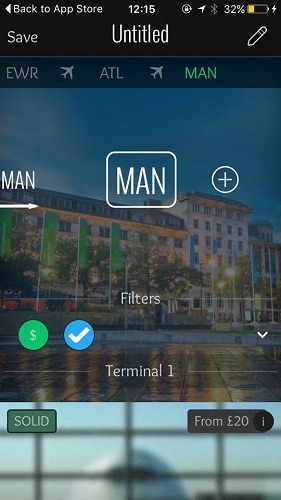
In my experience, the more expensive the lounge, the better the amenities. Those at the higher price point tend to come with complimentary showers, business suites with Apple computers, and superior food and drink.
If you’re a frequent traveler, it’s also perhaps worth getting a subscription to PriorityPass. For $399, you get unlimited access to select airport lounges worldwide for an entire year. $399 sounds steep, but it might end up saving you money, as you won’t have to pay for food, beverages, or Internet access whenever you visit an airport.
There are cheaper subscriptions, of course. $99 gets you a discount on each visit to a lounge, while $249 gets you 10 free visits, with each subsequent visit costing only $27.
Managing your PriorityPass subscription is super easy, too. They offer mobile apps for Android, iPhone and Blackberry, where you can access your digital membership card, modify your billing information, and rate the lounges you’ve visited.
I’m probably not the only one. I simply can’t sleep on airplanes. I don’t know why. I just can’t.
If you’ve got a long layover, or even worse, an overnight layover, you’re going to want to get some rest. But here’s the problem – airports aren’t naturally conducive to a restful night’s sleep. They’re just too loud, and bustling.
If you’re on a paper-thin budget, pay Sleeping in Airports a visit. This site provides tips for making your overnight airport stay a bit more restful, with reviews from real-world frugal travelers.
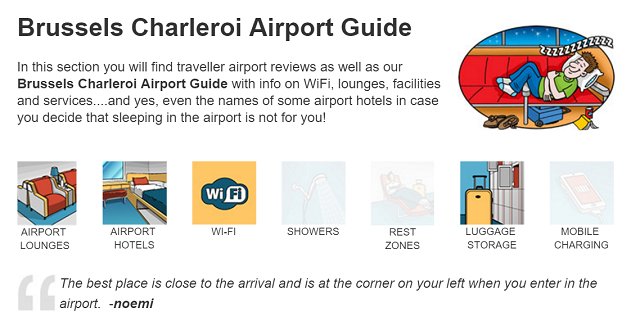
The next step up from that is to crash in the lounge. Some lounges, like the British Airways lounge at London Heathrow, have cabanas which you can rent out by the hour. For more information, check what LoungeBuddy has to say.
Finally, if you’ve got a slightly bigger budget, consider booking into an airport hotel. These are generally quite cheap, especially when compared to city hotels, but you can get them for even less with the Hotel Tonight app (which we first covered back in 2012), available for Android, iOS and Windows Phone.
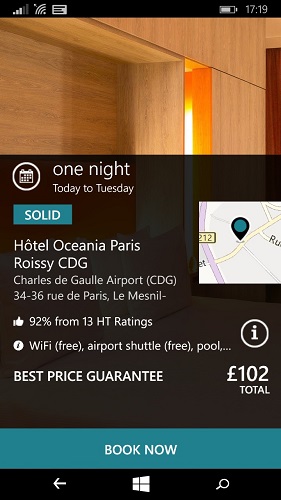
Hotel Tonight works by offloading unsold hotel rooms for a steep discount. While they’re often not the best rooms, they can be significantly cheaper than buying them from a hotel search engine.
Once your plane has touched down, you’re then faced with the challenge of getting to your hotel. Thankfully, technology can make this step a bit easier.
Although the cost of data roaming is plummeting – largely thanks to the European Union – it’s still a very expensive proposition to get online while abroad. I was recently in the US, and if I wanted to use the Internet on my UK cell phone, a megabyte would cost £5 (about $7.50).
Some countries also have spotty (or highly restricted) public WiFi access. Take Italy, for example. Since 2005, anyone who wants to offer any kind of public Internet access has to first ask for permission from the police, and has to take ID from anyone who wants to use the network. Although the rules have been relaxed recently, you still have to show government issued ID to use an Internet Café.
It’s similarly strict for WiFi hotspots. I was in Rome for five days earlier this year, and each Wi-Fi hotspot required you to authenticate with either an Italian cell phone (which I didn’t have), or your credit card details (which I wasn’t prepared to provide).
It’s especially problematic when your plane has just landed, and you have no way to order a ride or find directions to your accommodation. Lots of airports do not offer free WiFi access. This is especially true for the smaller airports that are used by low-budget airlines, like Brussels Charleroi and Paris Beauvais.
I’ve started to get around this by using a SkyRoam Hub.
This is a mobile WiFi hotspot, but with one important difference. Inside is a virtual SIM which allows you to securely access the Internet anywhere in the world for a flat rate of $10 per day. There are no surcharges, contracts or caps. And when I say anywhere, I mean it. SkyRoam covers most of Asia, Europe, the Americas, and Australasia. Coverage in Africa is a bit spottier, however.
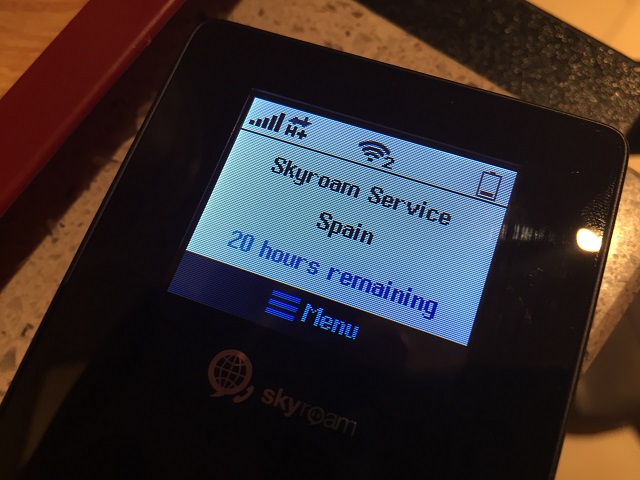
Although the day rate is pretty cheap, you do need to buy the hotspot. This costs $125, and includes five day passes. But it’s worth it, I’ve found.
If you’re only concerned with using messaging apps, you might want to consider purchasing a ChatSim (formerly known as WhatSim). These SIM cards allow you to send messages over Whatsapp, Line, BBM, Kik and more, for a flat fee of €10 (about $11).
The final hurdle when it comes to air travel is actually leaving the terminal. Everything about this stage of your journey is terrible – from getting through passport control and security, to navigating unfamiliar public transportation services. Terrible.
Some people are actually trying to solve this problem.
In June this year, I attended the Challengers conference in Barcelona, where I met a number of European and American startups. One which caught my eye was called Cityhook. This Dublin-based startup is trying to make the travel experience that bit less painless by offering a service that allows you to simply book airport connections online.
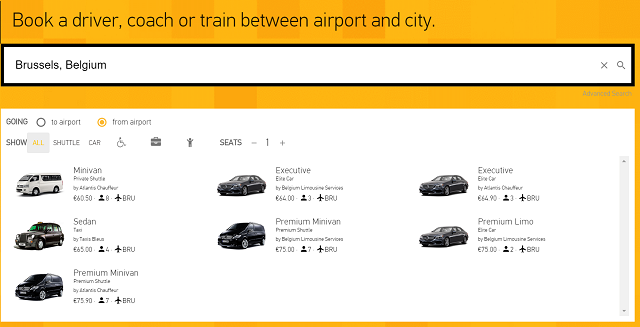
CityHook also has an API (Application Programming Interface), which they hope airlines will use in order to offer their passengers connections to their onward destinations as a value-added service.
Those who use Uber a lot probably know that many airports won’t let divers pick up passengers from outside the terminal. In these circumstances, I instead use Hailo.
Hailo is like Uber in many respects. You book your ride through your smartphone, and you pay using a saved credit card. They key difference is that instead of riding in someone else’s personal car, you’re using an actual taxi.
Hailo is available to download for iOS and Android. You can also book trips through their website.

There’s a lot to hate about air travel, from unsmiling TSA officers, to seemingly endless layovers, to being burdened with the middle seat. But with a bit of creativity, and by taking advantage of technology, you can make your journey that bit easier.
Do you use technology to enhance air travel? I want to hear about it. Drop me a comment below, and we’ll chat.




 Destiny: The Taken King increase light level over 200
Destiny: The Taken King increase light level over 200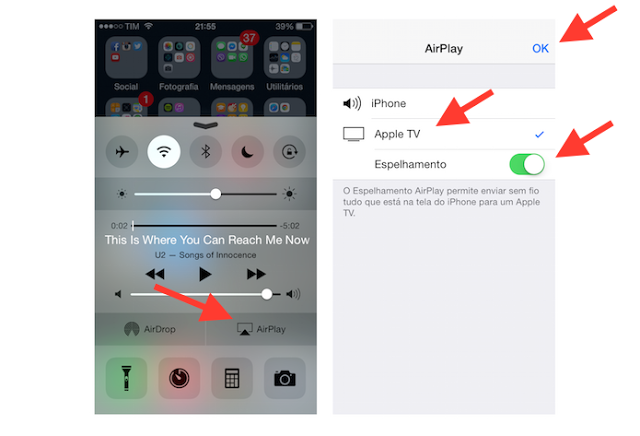 PowerPoint Presentation using iPhone and Apple TV
PowerPoint Presentation using iPhone and Apple TV Dark Souls 2 how to open Drangleic Castle door
Dark Souls 2 how to open Drangleic Castle door Killzone: Mercenary Walkthrough
Killzone: Mercenary Walkthrough Ratchet & Clank PS4 Wiki – Everything you need to know about the game .
Ratchet & Clank PS4 Wiki – Everything you need to know about the game .